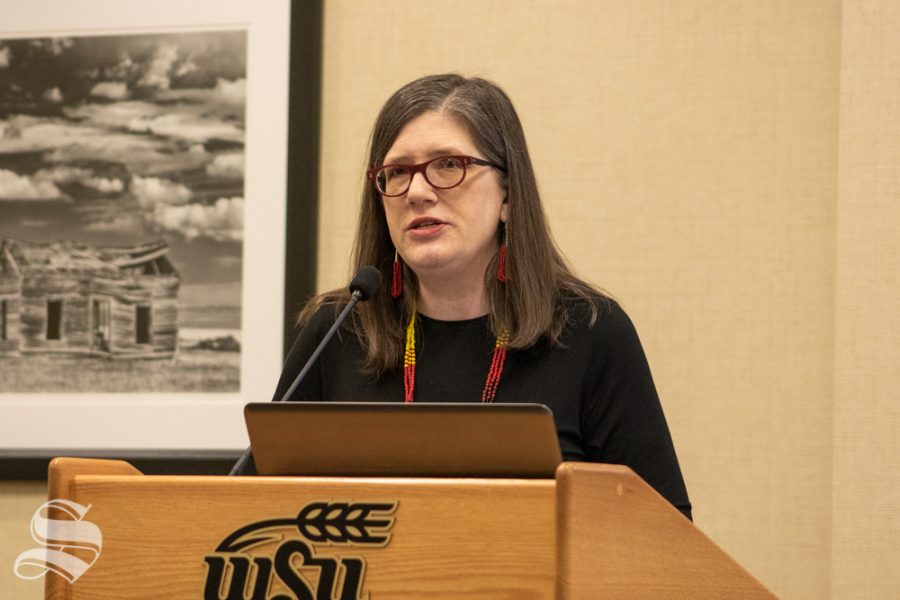Sarah Deer’s keynote addresses sexual violence in Native America
Sarah Deer from the University of Kansas speaks about sexual assault and sexual violence within the native american community in the Rhatigan Student Center Friday March 15.
University of Kansas Women, Gender and Sexuality professor Sarah Deer is a lawyer and author who recently published a book, “The Beginning and End of Rape: Confronting Sexual Violence in Native America.”
Deer gave the keynote address Friday at Wichita State’s 7th annual Gender & Sexuality conference, which was hosted by the WSU’s sociology department.
Deer’s keynote speech was titled “Sovereignity of the Soul: Confronting Sexual Violence in Native America.”
According to the National Institute of Justice, 84.3% of Native American women have experienced violence, 56% have experienced sexual violence, and 55% have been raped or experienced physical violence and\or stalking by an intimate partner.
Deer cited post traumatic stress disorder as an all-too-common byproduct of trauma and sexual violence. PTSD in Native American people is 4.4 times the national rate, she said.
Deer said experiencing violence is not exclusive to Native American adults.
“Native children in particular are also exposed to high rates of violence,” Deer said. “The same rates as veterans returning from Iraq and Afghanistan.”
Native American youth experience abuse at rates of 15.9 per one thousand compared to 10.9 per one thousand for white youth. Native American children experience PTSD triple the rate of the general population.
Deer said that while statistics and numbers are important, she believes that strictly looking at numbers overlooks the humanity of vulnerable people.
“I don’t like to leave it at numbers because numbers are just that . . . Numbers don’t reflect humanity,” Deer said. “They also don’t reflect the fact that, despite this, Native communities are thriving. We have to kind of balance the knowledge between the frequency of violence but also the resilience of our tribal communities.”
Deer said that while violence is a pressing problem that Native American people face today, it hasn’t always been this severe.
“When we back up into time . . . tribal nations had authority just like any government has authority to protect its people from violence and other dangerous things,” Deer said. “What we know about those experiences is that tribal nations . . . had very victim-centered systems.
She said the system was “about the survivor and the victim and what would be needed to correct the harm that was done to that person.”
Deer said that tribal nations had strict laws set in place to protect women and other vulnerable populations, although most of them were oral, not written.
The first written law regarding rape was called the “Creek Rape Law” and was introduced in 1824. The law declared that the victim of the crime should decide the punishment.
“It is a really unusual thing to think about when we look at how our legal system works now,” Deer said.
She said many people ask her the same question when she discusses this topic.
“What explains the journey from very low rates of violence . . . to today when we have the vast majority of Native people experiencing violence?” Deer said.
“It’s a very very long answer.”

Lindsay Smith is the former editor-in-chief and newsletter editor for The Sunflower. Smith was a journalism major at Wichita State with a minor in creative...









